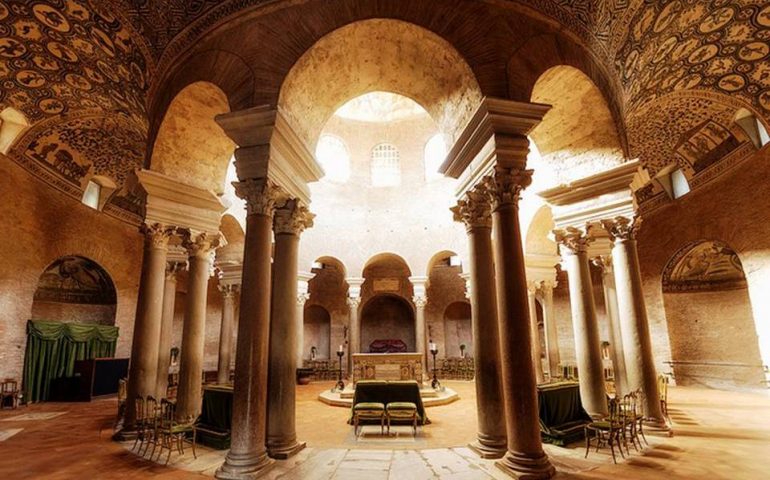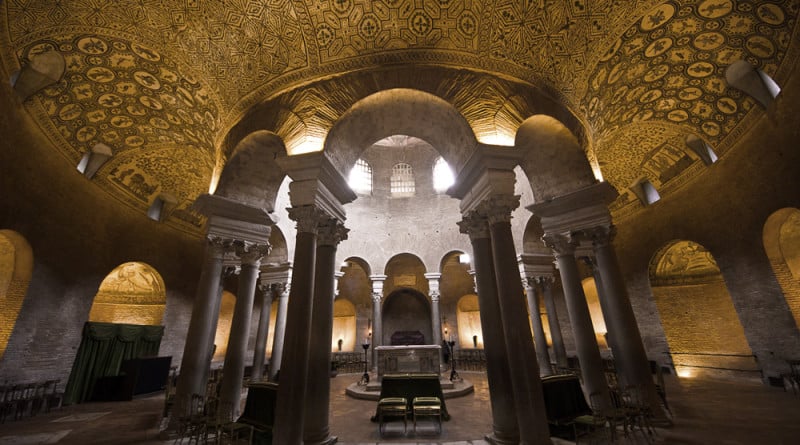Hidden Rome, The mausoleum of Santa Costanza
Hidden Rome, The mausoleum of Santa Costanza, better known as the mausoleum of Santa Costantina, it is a magnificent Catholic church, located within the monumental complex of Sant’Agnese fuori le mura, in Via Nomentana. Let’s find out all its peculiarities and some curiosities together.
It was built between 340 and 345, as his own mausoleum, by Constantina, daughter of Constantine I, close to the Constantinian basilica, near the tomb of Saint Agnes, of which Constantina was a devotee. Both Constantina and her sister Elena were buried there. The building was called “Santa Costanza” when Constantina was venerated as a saint.

The building introduces motifs of early Christian architecture, while representing the final phase of late ancient Roman architecture. The mausoleum has a central plan with a circular space covered by a dome and illuminated by twelve arched upper windows that define a luminous band around the tambour. The dome rests on 12 pairs of columns arranged in a ring. Externally the columns delimit an annular corridor covered by vaults.
This structure creates spaces strongly characterized by the contrast between light and penumbra. The dome of the building was originally covered with mosaics, which were destroyed around 1620.
However, the original mosaics of the 4th century still exist, in the annular vault that covers the ambulatory and in the niches.

After being used as the baptistery of the basilica of Sant’Agnese fuori le mura, it became an independent church in 1254 at the behest of Pope Alexander IV.
In the Renaissance, due to its spatial characteristics and its degree of conservation, it was the subject of great interest on the part of architects, even if the grape harvest scenes present in the mosaics meant that for centuries the building was mistakenly identified as a temple of Bacchus.

A curiosity: the opening scenes of Profondo Rosso, a famous film directed by Dario Argento, were shot right here, in the mausoleum of Santa Costanza.

Filming took place from 9 September 1974 to 19 December of the same year. The film is formally set in and around Rome, but the external scenes were mostly shot in Turin, and some in Rome and Perugia.
After the initial flashback in which we witness a crude murder perpetrated in the presence of the victim’s son, the film, a masterpiece by Dario Argento, opens immediately showing us the protagonist Marc Daly (David Hammings) struggling with his jazz group and with the members he is playing with. Daly explains to them how the performance of the piece just heard goes very well, a performance that is too perfect (which he defines too “clean).
The rehearsal room that houses these very first scenes was recreated inside the mausoleum of Santa Costanza in via Nomentana 349 in Rome, where a green carpet was placed for the occasion which is no longer present today. For the rest, the interiors are exactly those of the 74.

